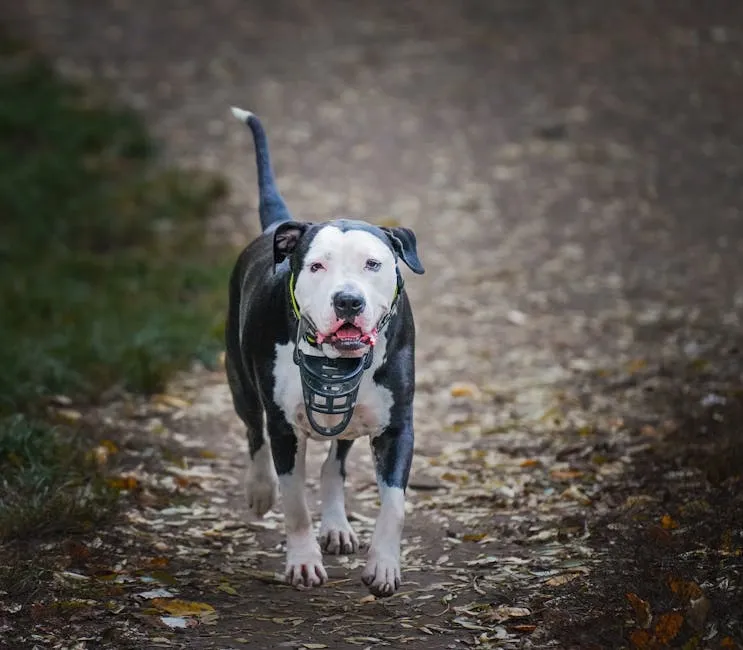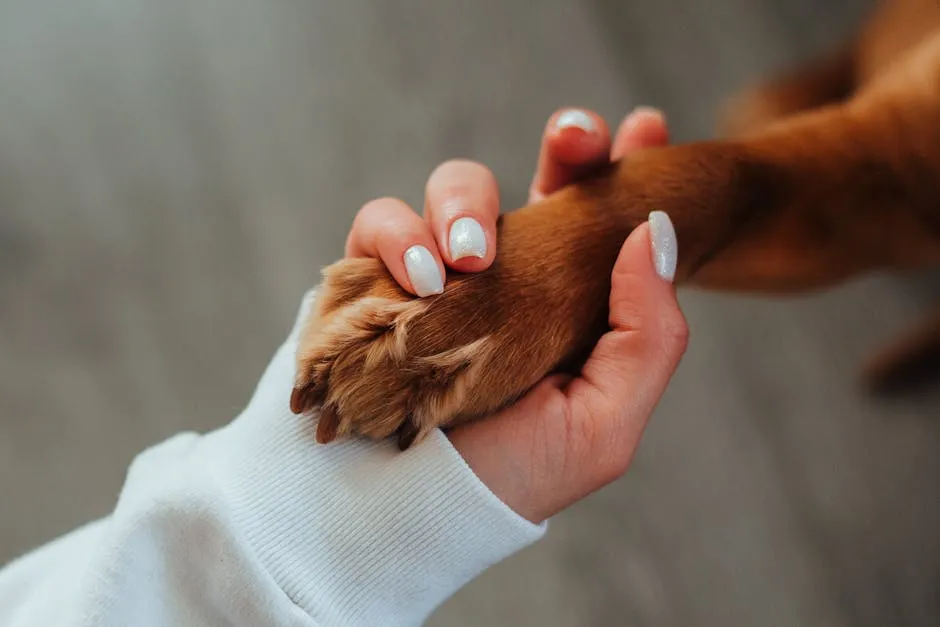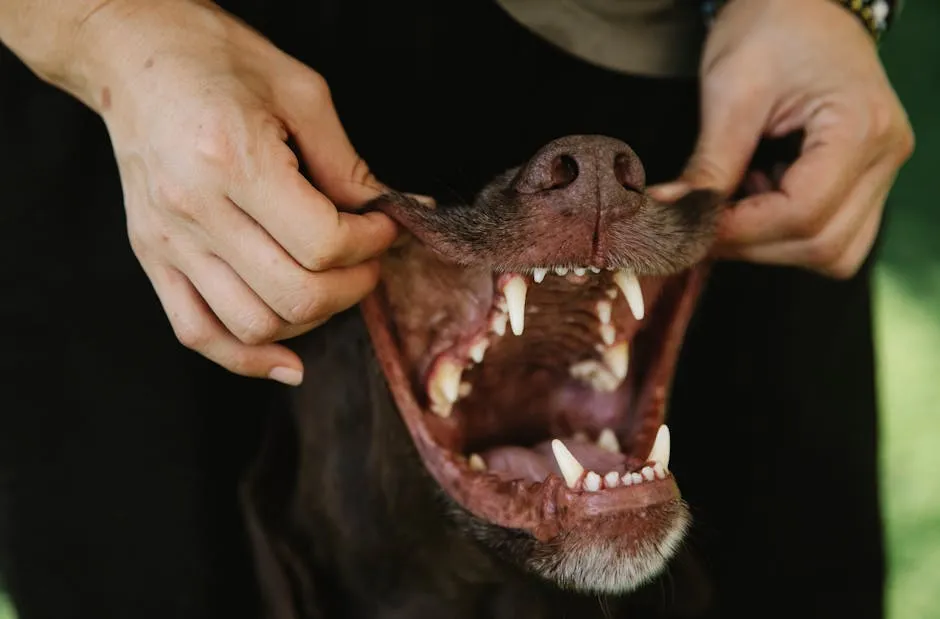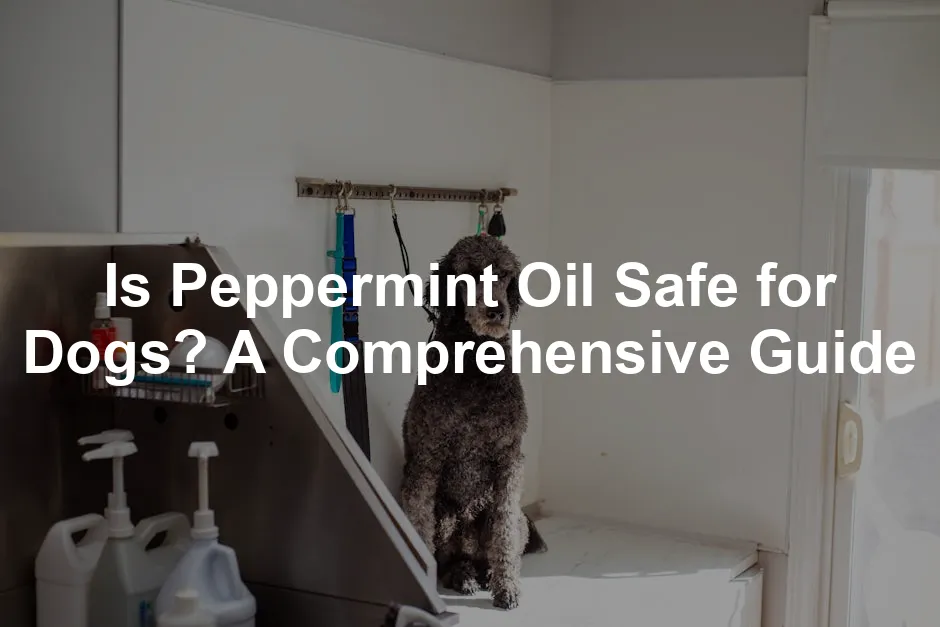Introduction
Have you ever wondered if peppermint oil is safe for dogs? Many dog owners are turning to essential oils for various health benefits. Peppermint oil, in particular, is popular for its refreshing scent and potential therapeutic uses. However, it’s crucial to understand its safety and any risks it may pose to our furry friends. This guide will provide you with well-researched insights into the benefits, risks, and proper usage of peppermint oil for dogs.
Speaking of essential oils, why not enhance your home environment with an Essential Oil Diffuser? It can fill your space with delightful scents while keeping your dog calm and relaxed.

Summary and Overview
Peppermint oil is extracted from the leaves of the peppermint plant, Mentha piperita, through a process called steam distillation. Its high menthol content gives it a distinctive aroma and cooling properties. While peppermint oil offers various potential benefits, it also comes with safety concerns for dogs.
On one hand, peppermint oil may provide natural remedies for issues like digestive discomfort and muscle pain. On the other hand, improper use can lead to toxicity and adverse reactions. Therefore, it’s vital to dilute peppermint oil properly and use it sparingly.
Consulting a veterinarian before introducing peppermint oil into your dog’s routine is essential. They can provide guidance tailored to your dog’s specific health needs and conditions. By understanding both the advantages and limitations, you can make an informed choice about using peppermint oil with your pet.
And while you’re at it, you might want to stock up on some Natural Dog Treats for your furry friend. After all, healthy snacks are a must for a happy pup!

What is Peppermint Oil?
Peppermint oil is an essential oil derived from the peppermint plant, known scientifically as Mentha piperita. This plant belongs to the mint family and is widely recognized for its aromatic properties. The oil is extracted through a process called steam distillation, which involves passing steam through the plant’s leaves. This method captures the volatile compounds, resulting in a concentrated oil.
The primary component of peppermint oil is menthol, which gives it a refreshing scent and cooling effect. Other compounds present include menthone and menthyl acetate. These qualities make peppermint oil popular in various applications, particularly in human health and wellness. People commonly use it to relieve headaches, alleviate digestive discomfort, and even freshen breath.
In addition, peppermint oil is often found in personal care products, such as lotions and shampoos, due to its soothing and invigorating properties. Many also use it in aromatherapy for its uplifting scent, which can enhance mood and promote relaxation.
Speaking of personal care, if you’re looking for a great Dog Shampoo with Peppermint, it can help keep your dog’s coat fresh and clean while providing a soothing experience!

Potential Benefits of Peppermint Oil for Dogs
Pain Relief
Peppermint oil has natural analgesic properties, meaning it can help relieve pain. Many pet owners believe it offers soothing effects for muscle and joint discomfort. Anecdotal evidence suggests that some dogs experience reduced pain after topical application of diluted peppermint oil. However, it’s essential to use caution, as improper application can lead to skin irritation.
For those muscle aches, consider a Dog Grooming Kit that can help you keep your pup’s coat in shape, reducing discomfort and preventing tangles!

Skin and Coat Health
Peppermint oil may be beneficial for dogs with skin irritations. Its antimicrobial properties could assist in treating minor skin infections. Many dog owners report improvements in their pets’ skin conditions after using peppermint oil diluted in a carrier oil. This oil may also help alleviate itching and inflammation, promoting a healthier coat.
If your pup needs a comfy place to lay their head, consider a cozy Dog Bed. A good bed can make all the difference for their skin and coat health!

Digestive Aid
Some claims suggest that peppermint oil can soothe digestive issues in dogs. It’s particularly noted for its potential benefits for dogs suffering from irritable bowel syndrome (IBS) or nausea. A small amount of diluted peppermint oil may help calm an upset stomach, providing relief from discomfort. However, always consult a veterinarian before introducing it to your dog’s regimen, as individual reactions can vary significantly.
Is Peppermint Oil Safe for Dogs?
Understanding Toxicity
Peppermint oil has raised concerns among pet owners. While it may have benefits, it’s vital to recognize its potential toxicity. Dogs metabolize essential oils differently than humans, which can lead to health issues. The severity of toxicity often depends on several factors.
First, the dog’s size plays a crucial role. Smaller dogs are more susceptible to adverse effects. Age is another factor; puppies and older dogs may have weaker immune systems. Lastly, a dog’s overall health, including pre-existing conditions, can influence how they react to peppermint oil. Always consult your vet before using it around your pet.
Signs of Toxicity
Recognizing the signs of peppermint oil toxicity is essential. Common symptoms include:
- Vomiting
- Diarrhea
- Lethargy
- Skin irritation
- Difficulty breathing
If you observe any of these signs in your dog, seek veterinary assistance immediately. Even small amounts of peppermint oil can cause serious health issues, so it’s best to err on the side of caution.
Individual Sensitivities
Every dog is unique, and sensitivities can vary widely. Some dogs may tolerate peppermint oil well, while others may have adverse reactions. It’s crucial to monitor your dog closely after any exposure.
If you’re introducing peppermint oil for the first time, observe your dog for any unusual behavior or symptoms. Always prioritize your pet’s comfort and well-being. If in doubt, consult a veterinarian to ensure safe practices when using essential oils.

How to Safely Use Peppermint Oil for Dogs
Dilution Guidelines
Before using peppermint oil, dilution is key. It’s essential to dilute the oil to a safe concentration of 0.5% to 2%. This means mixing one drop of peppermint oil with about one to two teaspoons of a carrier oil. Suitable carrier oils include Coconut Oil, Olive Oil, and Sweet Almond Oil. Always choose high-quality oils to ensure safety and effectiveness.
Application Methods
There are a few safe methods to use peppermint oil. Diffusing is a popular choice. When diffusing, use only one or two drops of oil in an open space. It’s crucial to allow your dog the freedom to leave the area if they wish. For topical applications, always ensure the oil is diluted properly before applying it to your dog’s skin.
Cautions and Precautions
Never use undiluted peppermint oil on your dog or give it orally without veterinary approval. Poor ventilation can intensify any negative reactions, so ensure the area is well-ventilated during use. Always monitor your dog closely for any signs of discomfort or adverse reactions. If your dog shows any unusual behavior, discontinue use and contact your veterinarian.

Emergency Measures
What to Do If Your Dog Ingests Peppermint Oil
If your dog accidentally ingests peppermint oil, it’s crucial to act quickly. First, contact your veterinarian immediately for guidance. Do not attempt to induce vomiting unless instructed by a professional. Offer small sips of water to help dilute the oil. Keep a close eye on your dog for any signs of distress. Quick action can make a significant difference in ensuring your dog’s safety and health.
Topical Exposure Response
If peppermint oil accidentally makes contact with your dog’s skin, follow these steps. First, gently wash the affected area with mild soap and water. This helps remove any residual oil. Next, observe your dog for any signs of irritation or discomfort. If your dog shows adverse reactions, contact your veterinarian immediately for guidance.
Using carrier oils can significantly help when dealing with peppermint oil exposure. Carrier oils dilute the essential oil, reducing its concentration and potential for irritation. Common carrier oils include Coconut Oil, Olive Oil, and Sweet Almond Oil. Always mix peppermint oil with a carrier oil before applying it to your dog’s skin to minimize the risk of adverse reactions.

Alternative Uses of Peppermint Oil
For Flea Control
Peppermint oil is often touted as a natural flea deterrent. Its strong scent can repel fleas and ticks, making it a popular choice among pet owners. However, it’s essential to consult your veterinarian for effective flea control strategies. They can recommend comprehensive treatment plans that combine safe, effective methods tailored to your dog’s needs.
Additionally, a Dog Flea and Tick Collar can provide ongoing protection for your furry friend, keeping them safe from pests!

For Freshening Breath
Peppermint oil can be a beneficial ingredient in dog dental care products. It helps freshen breath by targeting bacteria and debris in your dog’s mouth. However, it’s crucial to adhere to safe limits for oral use. Always ensure that any product containing peppermint oil is specifically formulated for dogs. This way, you can maintain good dental hygiene while keeping your pet safe.
And for a complete dental routine, consider a Dog Toothbrush and Toothpaste Set. Keeping your pup’s pearly whites clean has never been easier!

Conclusion
In summary, peppermint oil can offer some benefits for dogs when used correctly. However, safety remains paramount. Always consult your veterinarian before using peppermint oil to ensure it fits your dog’s health needs. Remember to use oils responsibly, focusing on proper dilution and application methods. As a dog owner, weighing the risks and benefits carefully is essential to keep your furry friend safe and healthy.
FAQs
Is peppermint essential oil safe to use around dogs?
When diffusing peppermint oil, ensure proper ventilation. Always allow your dog to leave the area to avoid overwhelming their sensitive senses.
What should I do if my dog shows signs of toxicity after exposure to peppermint oil?
If you suspect toxicity, contact your veterinarian immediately. Provide details about the exposure and follow their advice for treatment.
It’s important to know is peppermint oil safe for dogs before using it.
And while you’re considering your dog’s safety, don’t forget to check out a Dog First Aid Kit. Because accidents happen, and being prepared is always a smart move!
Please let us know what you think about our content by leaving a comment down below!
Thank you for reading till here 🙂
All images from Pexels





